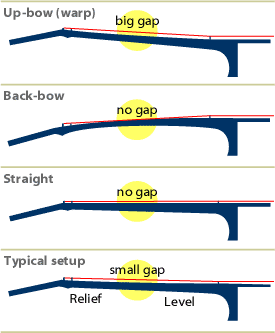Guitar Truss Rod Adjustment Acoustic

Before you do anything to your truss rod you need to have a reasonably good understanding of truss rods.
Guitar truss rod adjustment acoustic. Adjusting the truss rod of your guitar alters your guitar s neck relief the amount of bow in the neck measured by the distance between the strings and the frets. Adjusting a guitar truss rod is a key part of maintaining optimal playability. Guitar truss rod adjustment guide this article provides a top level view of how a truss rod works and how to adjust a truss rod. The access for adjusting the truss rod on an acoustic guitar is normally found either.
There s a variety of truss rod styles out there so it s important to check which will fit your guitar first. Some bow is necessary for a guitar to play well but you don t want it to be bowed too much. The neck of most guitars has what s known as a truss rod which is a one or two piece adjustable metal rod that goes down the inside of the center of the neck. Understanding your truss rod.
Under a cover at the headstock end usually you can get in there via a few screws the adjustment of the truss road is usually done with an allen key or a socket wrench. Different manufacturers put them in different places but they re usually at the headstock under a cap just behind the nut or where the neck joins the body just under. A truss rod is an interior metal bar running the entire length of a guitar s neck. While the amount of relief is a matter.
Some truss rods are hiding under a truss rod cover on the headstock but most acoustic ones are hiding inside the sound hole. The truss rod pulls the neck backward. Truss rod adjustments are made to alter the straightness flatness of the neck truss rods often require adjusting after changing string gauges or when temperature and humidity change the amount of bow in the neck. When a quality guitar leaves the factory the truss rod is adjusted according to the maker s taste in setup specs.
Adjusting guitar truss rods. But a change in string gauges climate especially a change in humidity or simply the player s taste may require an adjustment even on a new guitar.


















